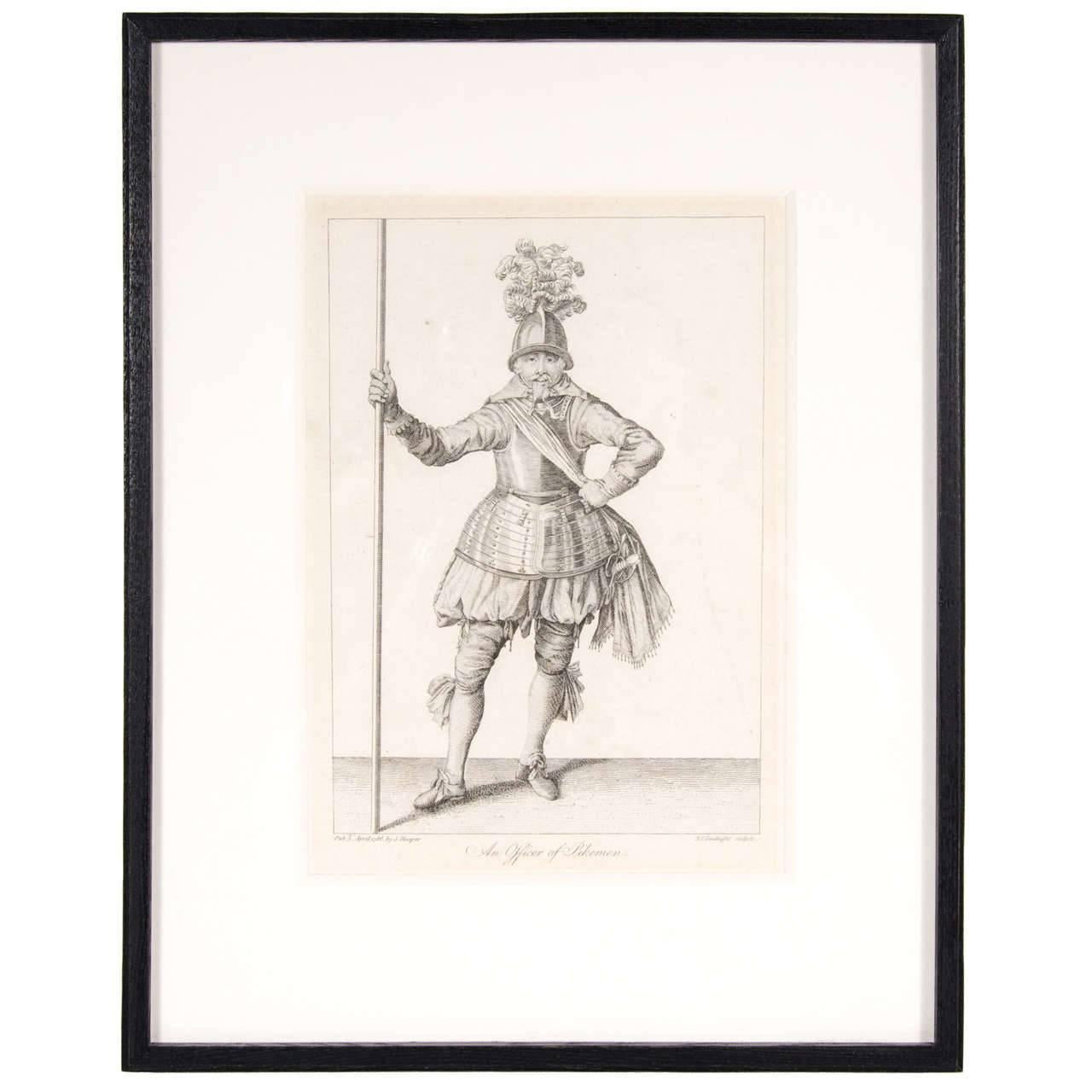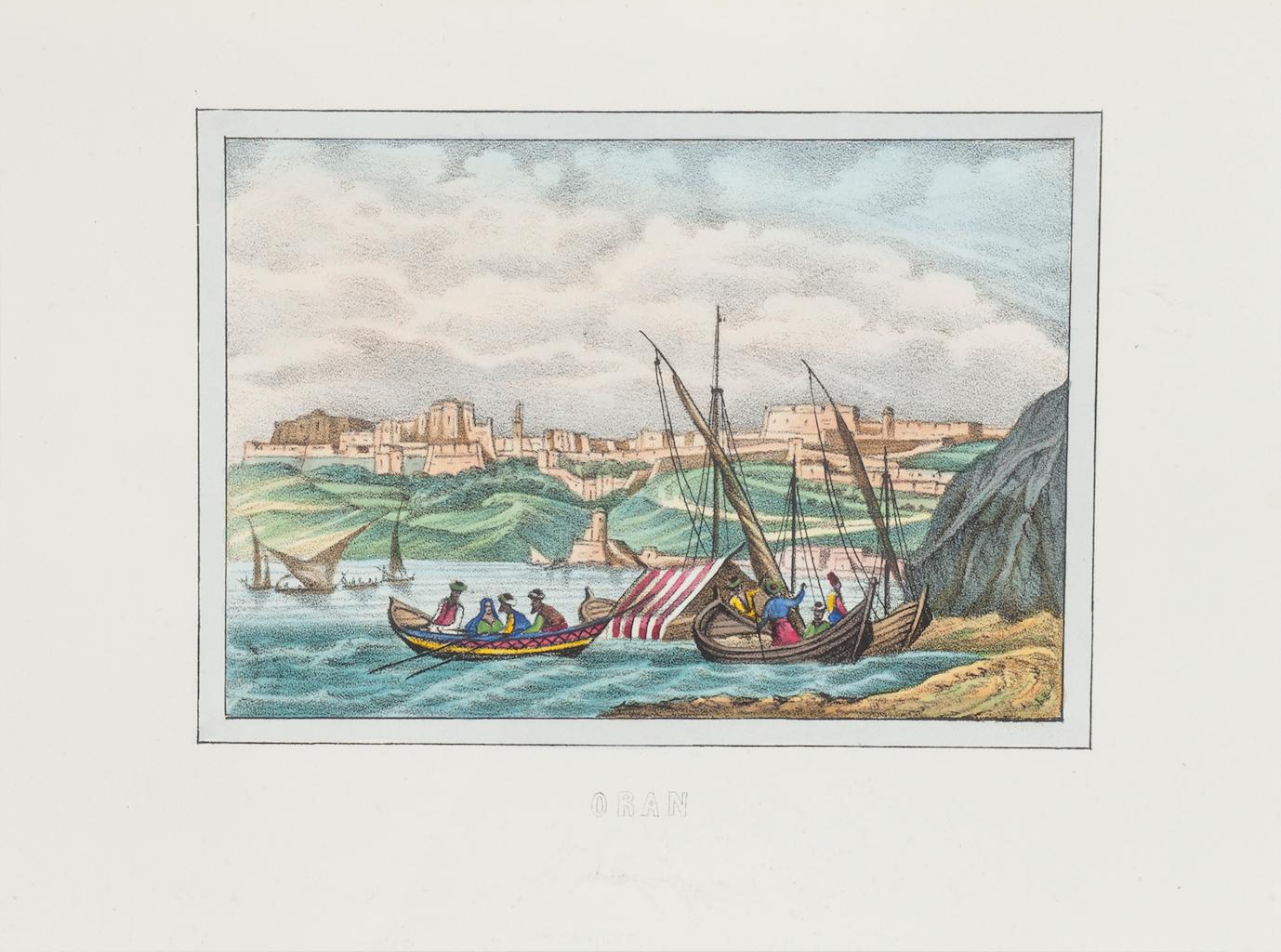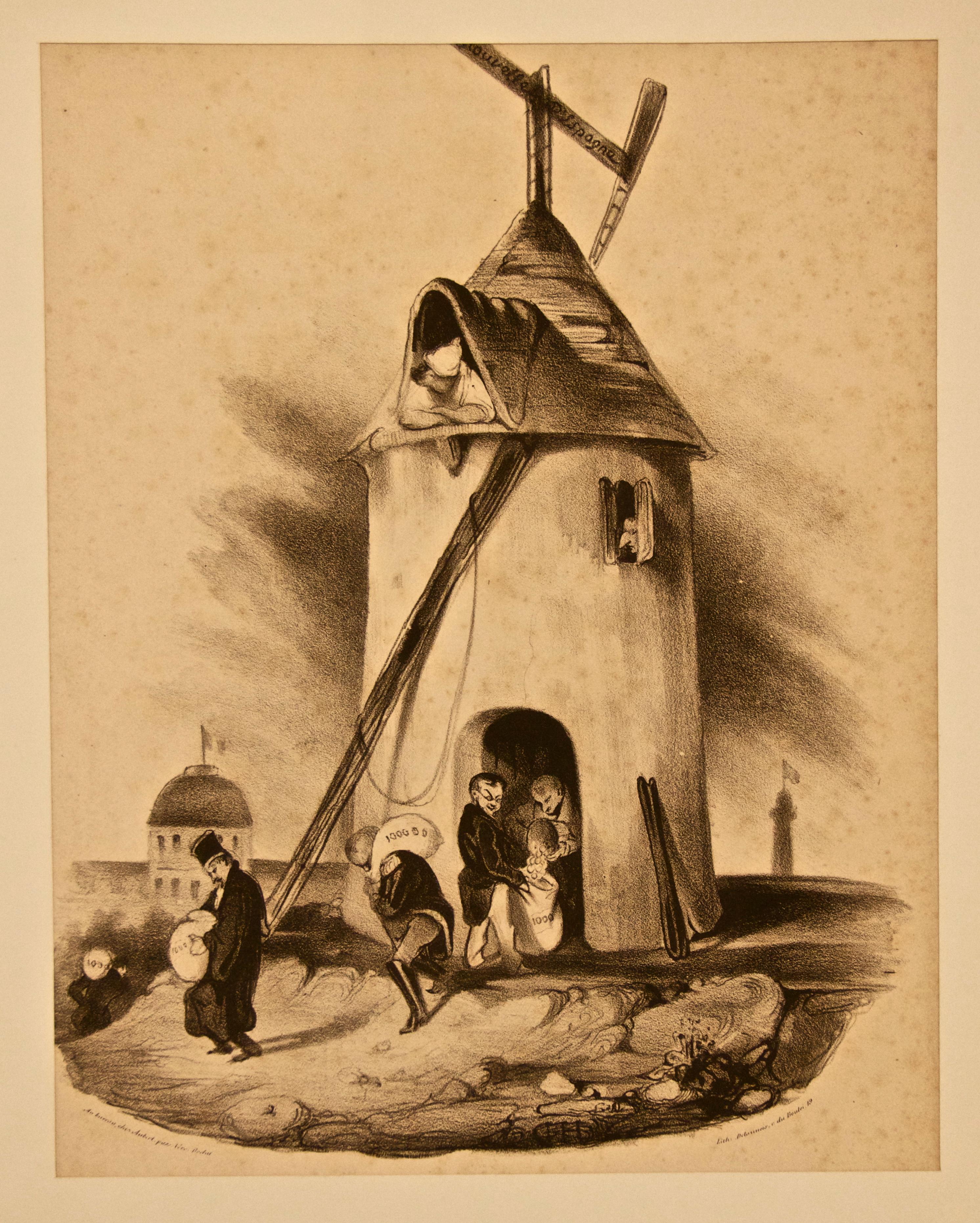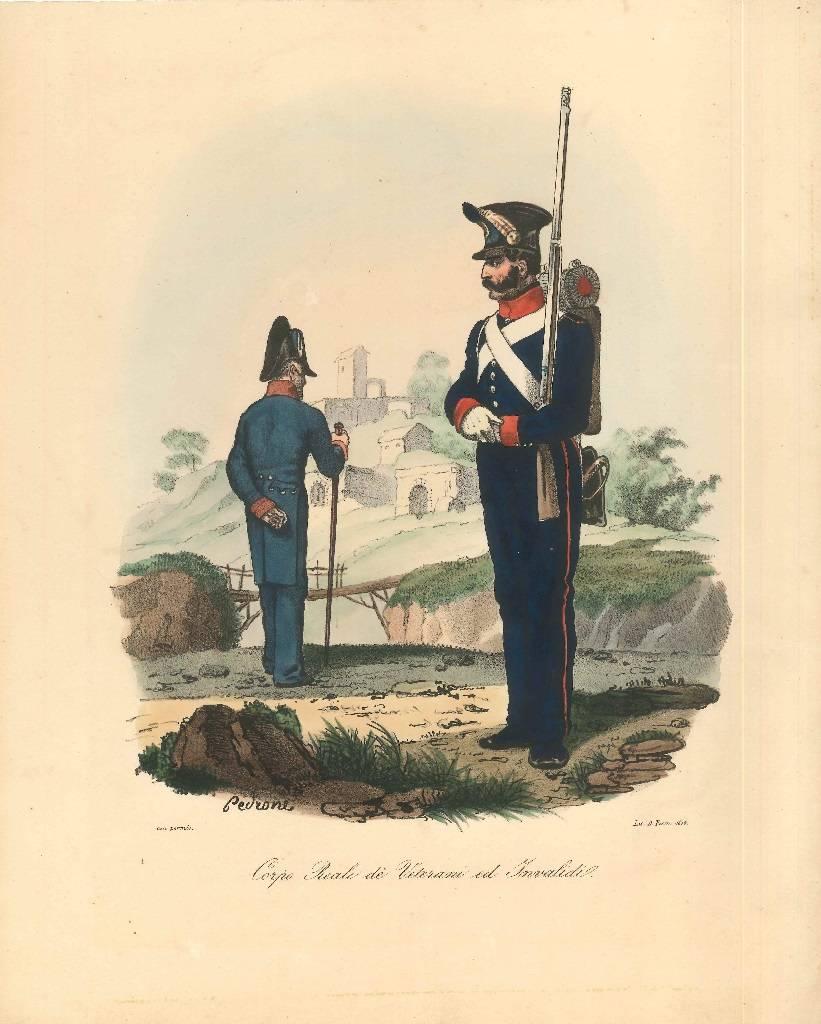Items Similar to Rider - Original Lithograph - 19th Century
Want more images or videos?
Request additional images or videos from the seller
1 of 2
UnknownRider - Original Lithograph - 19th Century19th Century
19th Century
About the Item
Rider is an original Hand-colored lithograph on paper realized by an Anonymous artist of the XIX century.
Titled on the lower center. Signed on the plate on the lower left.
Included two images in one sheet.
The state of preservation of the artwork is very good.
The artwork represents the military rider and the commander at the top and battle scenery on the lower, a fascinating piece of art through short and soft strokes in a well-balanced composition, details of the artwork in both images are perfectly applied through preciseness and delicacy, features by vivid colors, dynamic and harmonious components.
- Creation Year:19th Century
- Dimensions:Height: 9.85 in (25 cm)Width: 5.91 in (15 cm)Depth: 0.04 in (1 mm)
- Medium:
- Movement & Style:
- Period:
- Framing:Framing Options Available
- Condition:Insurance may be requested by customers as additional service, contact us for more information.
- Gallery Location:Roma, IT
- Reference Number:
About the Seller
4.9
Platinum Seller
These expertly vetted sellers are 1stDibs' most experienced sellers and are rated highest by our customers.
1stDibs seller since 2017
6,768 sales on 1stDibs
Typical response time: 2 hours
- ShippingRetrieving quote...Ships From: Grasse, France
- Return PolicyA return for this item may be initiated within 14 days of delivery.
More From This SellerView All
- Music and Poetry Program - Original Litograph - 1880Located in Roma, ITMusic and poetry program is a litograph realized by an unknown artist in 1880. This beautiful artwork rapresents a music and poetry program. In very ...Category
1880s Old Masters Figurative Prints
MaterialsLithograph
- View of Oran - Original Lithograph - 1846Located in Roma, ITView of Oran is an original Hand-colored lithograph on paper realized in 1846 by an Anonymous artist of the XIX century. Titled in Italian on the lower center "Oran". The state of...Category
1840s Old Masters Figurative Prints
MaterialsLithograph
- Le Moulin du Télégraphe (Nouvelles d'Espagne) - Lithograph by H. Daumier - 1830sBy Honoré DaumierLocated in Roma, ITImage dimensions: 31.5 x 25 cm. Published on: La Caricature, October 16, 1834 Not Signed. It includes passepartout. Good conditions except some mowings.Category
1830s Old Masters Figurative Prints
MaterialsLithograph
- Brigata di PiemonteLocated in Roma, ITTitle at the center of the lower margin. "Lit. Foudraz" in the lower right margin. In very good conditions except some light foxing and two little holes in the higher margin, and nor...Category
19th Century Old Masters Figurative Prints
MaterialsLithograph
- Battaglione Real NaviLocated in Roma, ITTitle at the center of the lower margin. In very good conditions except a lightly damaged in right margins, and normal brown paper in margins. Interesting colored lithograph which de...Category
Early 19th Century Old Masters Figurative Prints
MaterialsLithograph
- Corpo Reale dè Veterani ed InvalidiLocated in Roma, ITTitle at the center of the lower margin. Signed on the plate "Petrone." in the lower left margin. "Con permis", in lower-right "Lit. D. Festa, 1836". In very good conditions except ...Category
1830s Old Masters Figurative Prints
MaterialsLithograph
You May Also Like
- Antique Copper Engraving of an Officer of Pikeman by Francis GroseBy Francis GroseLocated in New York, NYFrancis Grose entered the army early in life and served in the cavalry, infantry, and militia. He produced some compelling and sought after engravings on subjects including ancient a...Category
19th Century Old Masters Figurative Prints
MaterialsLithograph
- "Nicolas Poussin, Homage, " Color Lithograph signed by Claude WeisbuchBy Claude WeisbuchLocated in Milwaukee, WI"Nicolas Poussin, Homage" is an original color lithograph by Claude Weisbuch. The artist signed the piece in the lower right and wrote the edition numb...Category
1970s Old Masters Figurative Prints
MaterialsLithograph
- "Anatomie d'Un Reve, " Original Color Lithograph signed by Claude WeisbuchBy Claude WeisbuchLocated in Milwaukee, WI"Anatomie d'Un Reve" is an original color lithograph by Claude Weisbuch. The artist signed the piece in the lower right and wrote the edition number, IX/CXXX, in the lower left. This...Category
1970s Old Masters Figurative Prints
MaterialsLithograph
- "Ce Matin Avant l'Aurore, " Original Lithograph Genre Scene by Honore DaumierBy Honoré DaumierLocated in Milwaukee, WI"Ce Matin Avant l'Aurore" is an original lithograph by Honore Daumier, the second state of three. Original Text: Ce matin, avant l'aurore, Un Dieu vint me réveiller ; Il me dit : tu dors encore… Est-il temps de sommeiller ? De ton Papa c’est la fête, Fais lui quelque don flatteur En lui posant sur la tête Une Couronne de fleurs. Translation: This morning before dawn A God came to wake me up The curtains they were drawn And my snoring had to stop It is your daddy's birthday, A time for gifts and flowers To be placed on his head so gray Instead of his morning showers. Artwork Size: 9 1/4" x 9 1/4" Frame Size: 20 1/2" x 17 5/8" Artist Bio: Daumier was a prolific draftsman who produced over 4000 lithographs, he was perhaps best known for his caricatures of political figures and satires on the behavior of his countrymen, although posthumously the value of his painting has also been recognized. His works offer a commentary on social and political life in France in the 19th century. French caricaturist and painter, born at Marseilles. He showed in his earliest youth an irresistible inclination towards the artistic profession, which his father vainly tried to check by placing him first with a huissier, and subsequently with a bookseller. Having mastered the technique of lithography, Daumier started his artistic career by producing plates for music publishers, and illustrations for advertisements; these were followed by anonymous work for publishers, in which he followed the style of Charlet and displayed considerable enthusiasm for the Napoleonic legend. When, in the reign of Louis-Philippe, Philipon launched the comic journal, La Caricature, Daumier joined its staff, which included such powerful artists as Devéria, Raffet and Grandville, and started upon his pictorial campaign of scathing satire upon the foibles of the bourgeoisie, the corruption of the law and the incompetence of a blundering government. His caricature of the king as "Gargantua" led to Daumier's imprisonment for six months at Ste. Pélagie in 1832. The publication of La Caricature was discontinued soon after, but Philipon provided a new field for Daumier's activity when he founded the Charivari. For this journal Daumier produced his famous social caricatures, in which bourgeois society is held up to ridicule in the figure of Robert Macaire, the hero of a then popular melodrama. Another series, "L'Histoire Ancienne", was directed against the pseudoclassicism which held the art of the period in fetters. In 1848 Daumier embarked again on his political campaign, still in the service of Charivari, which he left in 1860 and rejoined in 1864. In spite of his prodigious activity in the field of caricature -- the list of Daumier's lithographed plates compiled in 1904 numbers no fewer than 3958 -- he found time for flight in the higher sphere of painting. Except for the searching truthfulness of his vision and the powerful directness of his brushwork, it would be difficult to recognize the creator of Robert Macaire, of Les Bas bleus, Les Bohémiens de Paris, and the Masques, in the paintings of "Christ and His Apostles" at the Ryks Museum in Amsterdam, or in his "Good Samaritan", "Don Quixote and Sancho Panza", "Christ Mocked...Category
1830s Old Masters Figurative Prints
MaterialsLithograph
- One Can't Tell Why - Proof from the Disasters of WarBy Francisco GoyaLocated in New York, NYFrancisco José de Goya y Lucientes (1746 Fuendetodos – Bordeaux 1828), No se puede saber por qué – One can’t tell why ca. 1808–1814, etching, burnished aquatint, drypoint, an...Category
1810s Old Masters Figurative Prints
MaterialsDrypoint, Etching, Aquatint
- Two military studies, a preparatory red chalk drawing by Jean-Baptiste PaterBy Jean-Baptiste PaterLocated in PARIS, FRAs Florence Ingersoll-Smouse wrote in 1921 in her book devoted to Jean-Baptiste Pater, "a painter of the Fête galante, Pater is interesting both by his intimacy with Watteau, to whom many of his works are still attributed, and by his own value as an artist.” This sanguine, full of life and spontaneity, is typical of the preparatory studies made by the painter to be used later in the composition of his paintings. 1. Jean-Baptiste Pater, pupil and disciple of Antoine Watteau Antoine Pater, Jean-Baptiste's father, belonged to the petty bourgeoisie of Valenciennes where he worked as a merchant-sculptor. His brother Jacques was a local painter who was probably involved in his nephew's training. Born on December 29, 1695, Jean-Baptiste Pater was first trained with Jean-Baptiste Guider, a local painter whose death in 1711 was probably the reason for Jean-Baptiste’s departure alongside Watteau, who was visiting Valenciennes. Watteau's difficult character led to their separation in 1713. Back in Valenciennes, Jean-Baptiste Pater encountered difficulties with the powerful Corporation of Saint-Luke (to which he refused to belong) which forced him to return to Paris in 1718. He reconciled with Watteau shortly before his death (on July 18th 1721), inherited the commissions that Watteau had been unable to fulfil and completed some of his paintings. Pater was accepted by the Académie Royale in 1725 but did not produce his reception painting The soldier’s revels until three years later. Throughout his brief career (he died at the age of forty on July 25th 1736), he mainly had a clientele of amateurs and received only one royal commission, shortly before his death. 2. Description of the drawing and related artworks Pater had adopted his master Watteau's method of composition. His study drawings were carefully glued in a notebook and were used to animate his compositions. His paintings sometimes suffer from a somewhat artificial composition, since the figures seem to be pasted one next to the other. This point has also been made about Watteau’s. The theme of military scenes (which was at the time included in the genre of Fêtes galantes!) was one of Pater’s favourite subjects. Together with the Bathing Women...Category
1720s Old Masters Figurative Prints
MaterialsChalk
Recently Viewed
View AllMore Ways To Browse
Master And Commander
Calder Circus
Cat Scratch
1950 Fashion Illustrations
Jean Roy
Erotic 1940s
Czech Original Artwork
Old Bike
Vintage Bank Box
Vintage Servant
Louis Vuitton Offset
Italian Mother Painting Mid Century
Silhouette Portrait Vintage
Vintage 70s Van
Vintage Map Drawing
Antique African Art Sculpture
Drawing Of Woman In Hat
Moor Sculpture





